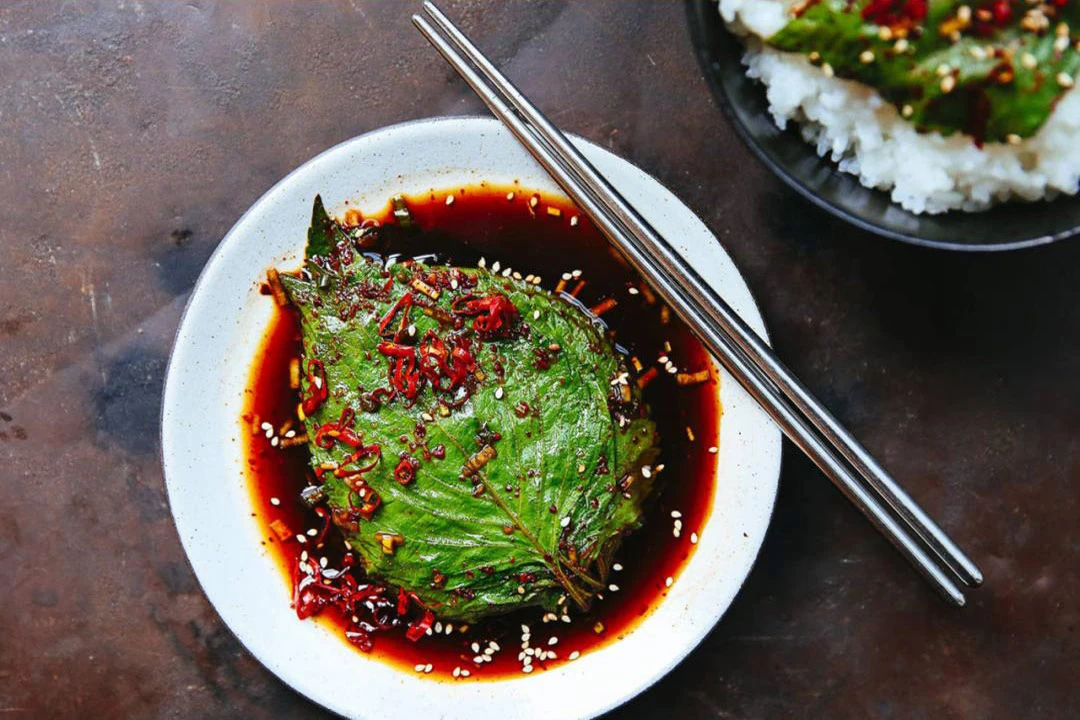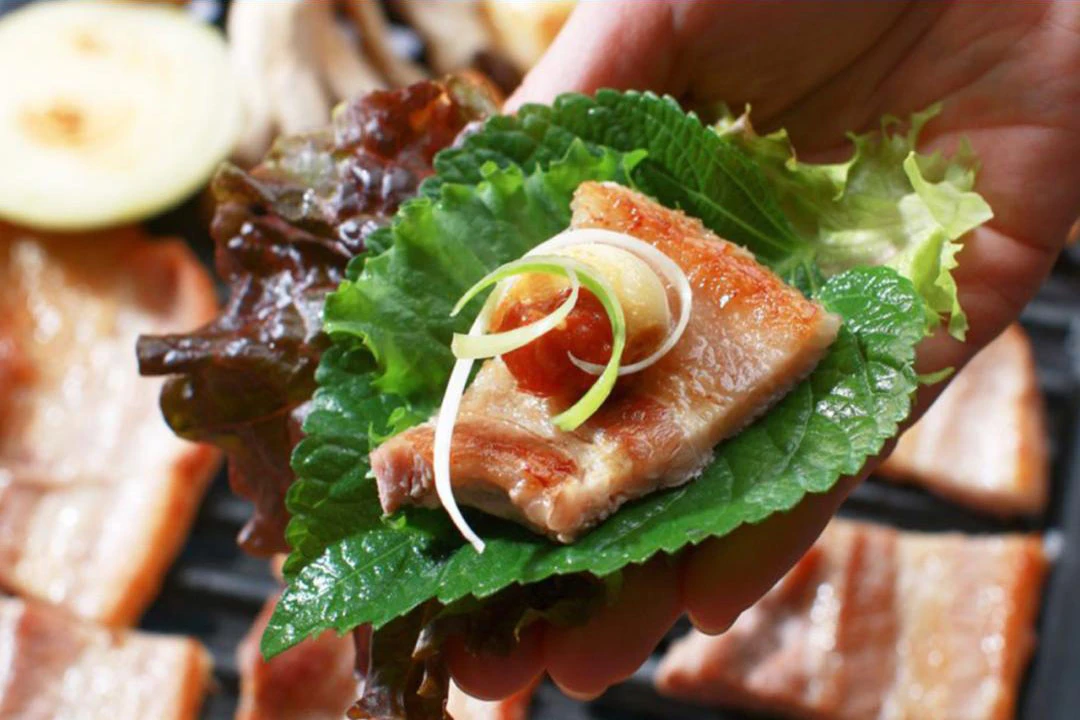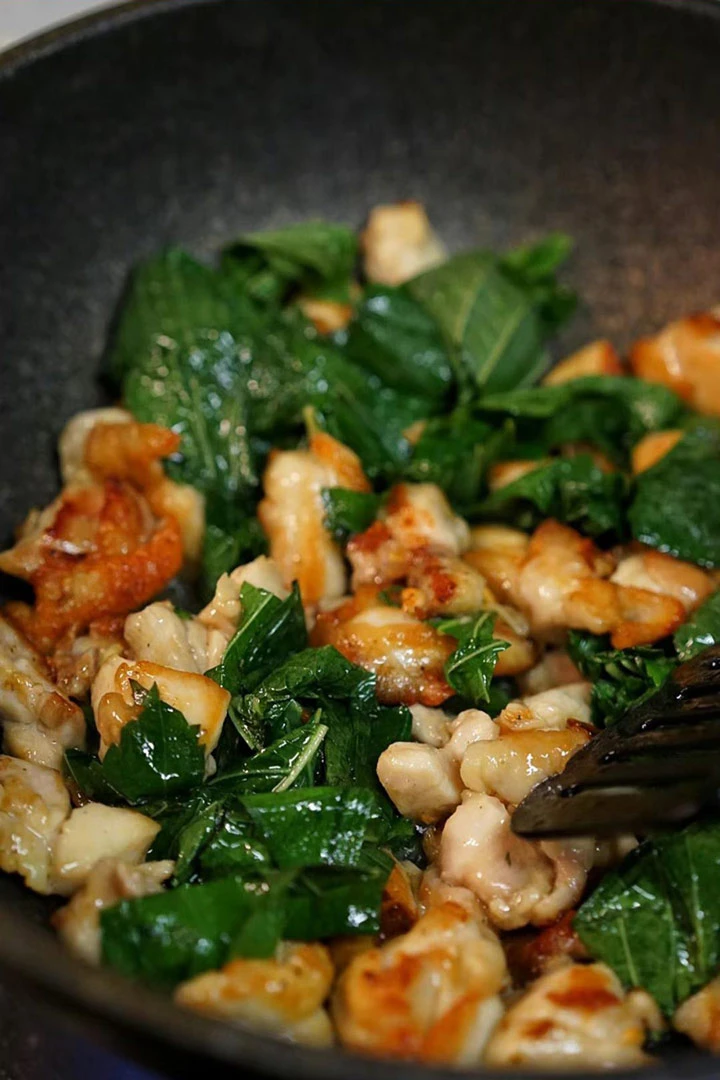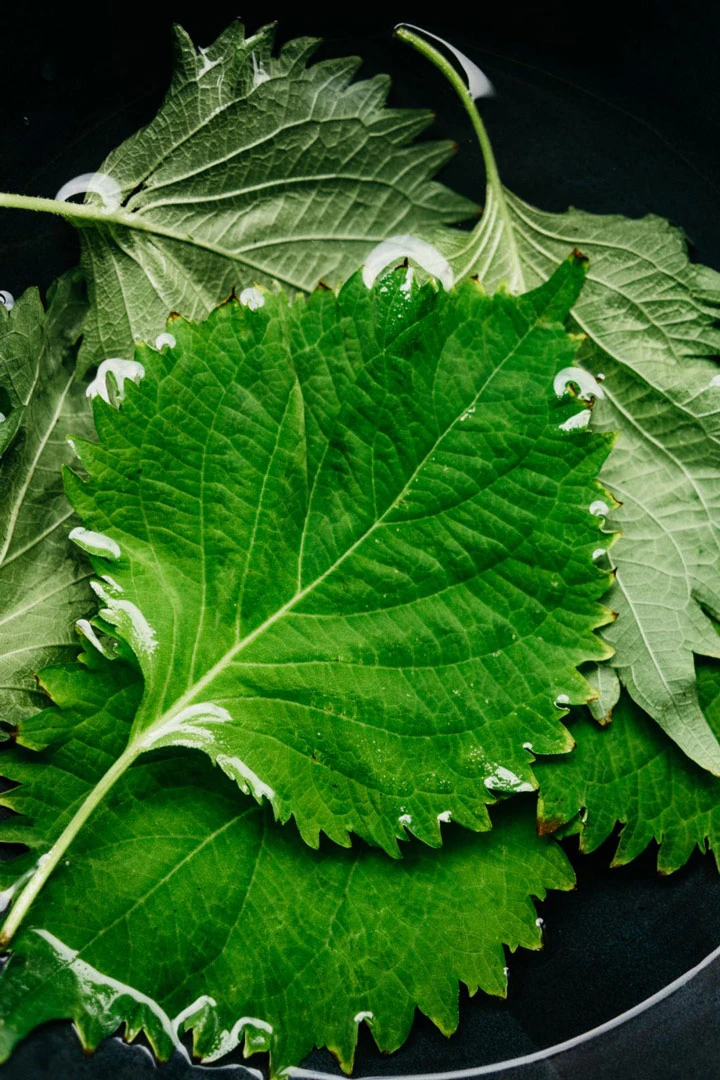Perilla (紫苏), a herbaceous annual plant of the mint family, is easily recognizable by its vibrant green or purple leaves, serrated edges, and most notably, its intense fragrance. Its popularity spans across various provinces in China, each region giving it a unique name: "Renzi (荏子)" in Gansu and Hebei, "Chisu (赤苏)" in Shanxi and Fujian, "Jisu (鸡苏)" in Hunan, and "Shuishengma (水生麻)" in Hubei, to name a few. The herb's many regional names, with nearly 40 variants recorded in historical texts, reflect its widespread use and the cultural significance it holds across different areas.
The earliest records of perilla's varieties date back to the Qin and Han dynasties in ancient Chinese medicinal texts. Green-leaved perilla, referred to as "Ren (荏)," and purple-leaved perilla, known simply as "Su (苏)," were distinguished for their different flavors. Historical accounts suggest that purple-leaved perilla, with its stronger aroma, was preferred in both culinary and medicinal uses.
Modern botanical studies, however, debate whether to classify green and purple perilla as distinct species or as variations of the same species. The mainstream view in China is that they are variations due to cultivation, with purple-leaved perilla being slightly more aromatic than its green counterpart. The flavor of perilla comes from its volatile oils, primarily perillaldehyde and perillaketone, which contribute to its distinctive aroma. While there are seven known chemical types of perilla, only the PA type, rich in perillaldehyde, is used in cooking, giving purple-leaved perilla its signature "fresh tea-like" scent.

Perilla: A Versatile Herb with Ancient Roots
Perilla's history in China is long and storied, with its cultivation and use dating back centuries. It has been valued as both a medicinal herb and a culinary ingredient, frequently mentioned in classic texts like the "Compendium of Materia Medica." This ancient text describes perilla's spicy flavor, which was believed to invigorate the qi (vital energy) and improve blood circulation.
Perilla's culinary applications are just as diverse as its medicinal ones. Historical texts provide detailed recipes and instructions for preparing perilla, from mixing it with vegetables or fruits to using it in soups or drinks. The Western Han dynasty's literary masterpiece "Seven Stimulations" even praises the "autumn yellow perilla," which is combined with vegetables nourished by autumn dew for a truly exquisite flavor. Ancient gourmets clearly understood the importance of seasonal ingredients in creating unforgettable dishes.
In Hunan, perilla's peak season coincides with the time when river fish are at their fattest, making it a staple in local markets. Fresh perilla is sold in bundles alongside river fish like eels, bullfrogs, yellow catfish, and crayfish. Hunan's cooks use fresh lard to stir-fry these river delicacies with perilla, creating dishes where the herb's distinctive fragrance cuts through the fishiness, adding a refreshing, slightly spicy sweetness to the meal. This culinary technique has become a secret weapon in Hunanese kitchens, where the herb's subtle yet potent aroma is preferred over the more overpowering flavors of Sichuan peppercorns or Shaoxing wine.
Even the famous Hunanese dish of spicy crayfish, made popular by a television show, is incomplete without the curled-up perilla leaves that give it soul. In homes across Hunan, boiling fish with a few leaves of perilla before serving is almost a ritualistic practice, essential for achieving the dish's signature balance of spice and freshness.
From Tradition to Modern Cuisine: Perilla's Endless Possibilities
Beyond fish, perilla also pairs beautifully with poultry. In Guangdong, perilla-braised duck is a beloved home-style dish, where the herb infuses the meat with its aromatic oils, making it tender and flavorful. The dish is perfect for hot summer days when appetites are low, as the perilla's refreshing scent helps stimulate the palate. The Hakka people take it a step further with a dish of white-cut duck served with a sauce made from finely chopped fresh perilla and garlic, a method that writer Zhong Xiaoqiao describes as "unique and rich," highlighting perilla's ability to elevate even the simplest of dishes.
In Sichuan, perilla chicken is a familiar comfort food, where the herb makes two appearances: first, the stems are used during the cooking process, and then the tender leaves are quickly blanched before serving. It is believed to have medicinal properties, making it a popular choice for nourishing postpartum women or children with poor appetites. This dual use of perilla in both traditional medicine and cuisine underscores its versatility and enduring appeal.
Perilla's flavor transcends borders, resonating with culinary traditions across East Asia. In Korea, green perilla leaves, known as "ssam," are commonly used to wrap grilled meats, along with slices of chili and garlic. The leaf's crisp, slightly bitter taste balances the richness of the meat, while perilla leaf kimchi, a popular side dish, has become a staple in Korean restaurants worldwide.
In Japan, perilla's influence is seen in the iconic umeboshi (pickled plum), a tradition dating back to the Tang dynasty. Umeboshi, often colored and flavored with perilla, is a quintessential summer food, used in everything from rice balls to various cooked dishes. The herb not only enhances the pickles' vibrant color but also adds depth to their flavor, creating a complex taste experience.
Perilla's versatility even extends to beverages, with the herb being used to create refreshing summer drinks. The practice of making perilla water dates back to the Song and Yuan dynasties, where it was once ranked as the finest non-tea beverage by Emperor Renzong of the Song dynasty. Fresh perilla leaves are lightly roasted and then steeped in boiling water, resulting in a fragrant tea that was once a must-have in summer banquets.
As the summer sun fades and the leaves begin to fall, the memories of perilla's aromatic journey linger on. Whether enjoyed as a refreshing drink, a flavorful garnish, or the star ingredient in a beloved dish, perilla continues to be a symbol of summer's fleeting beauty across Asia.



